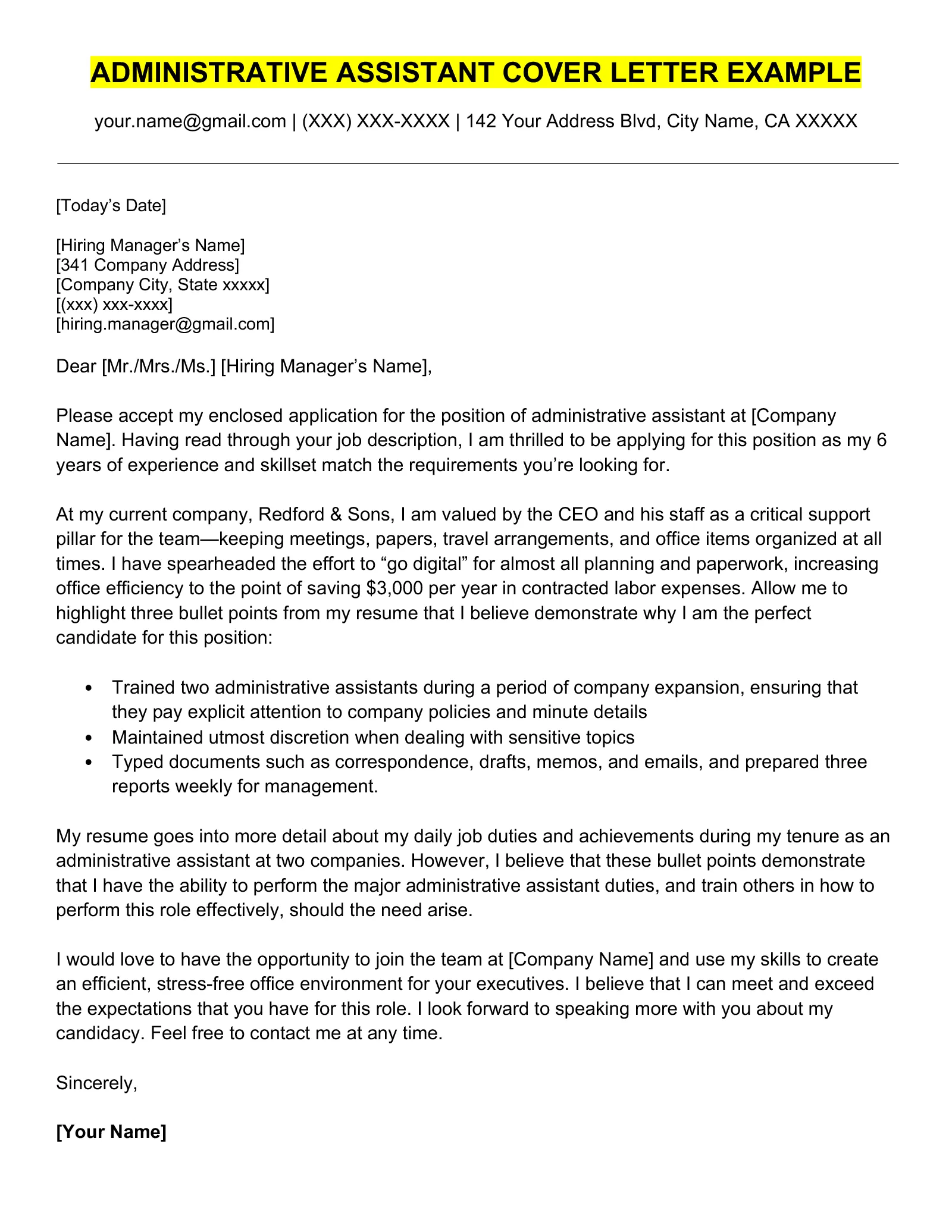What is an Administrative Assistant Cover Letter?
An administrative assistant cover letter is a crucial document accompanying your resume when applying for an administrative assistant position. It serves as your introduction to a potential employer, providing an opportunity to highlight your skills, experience, and personality in a way that a resume alone cannot. This letter allows you to express your enthusiasm for the role and demonstrate why you are the ideal candidate. It showcases your ability to communicate effectively, a vital skill for any administrative role. A well-crafted cover letter can significantly increase your chances of getting an interview by making a strong first impression and setting you apart from other applicants. Remember, it’s not just a formality, it’s your first chance to shine.
Key Components of a Cover Letter
A compelling cover letter is structured logically and includes essential information. These components work together to create a clear, professional, and persuasive document that presents you in the best possible light. Each section serves a distinct purpose, and attention to detail in each is crucial. Carefully crafting each element allows you to make a memorable impression on the hiring manager and highlight your suitability for the role.
Contact Information
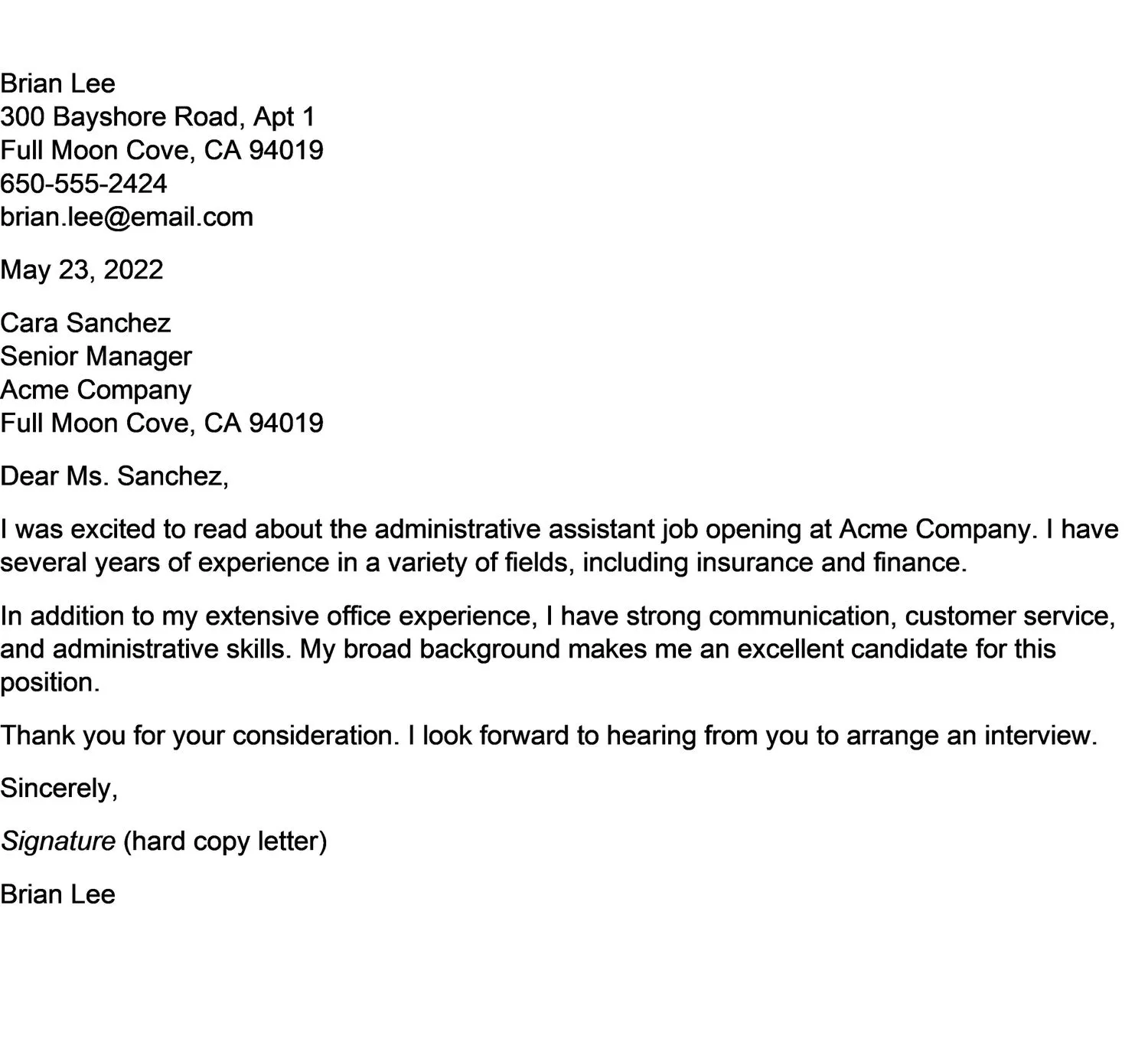
At the top of your cover letter, provide your contact information including your full name, phone number, email address, and optionally, your LinkedIn profile URL. Ensure the email address is professional and current. This section allows the hiring manager to easily reach you for an interview. It’s also a good practice to ensure that the information is easily readable and well-organized.
Date
Directly below your contact information, include the date you are writing the letter. This is important for keeping track of your application and is a standard practice in professional correspondence. The date helps the employer understand when you applied and gives context to your application. The date should align with the day you are sending your cover letter.
Hiring Manager’s Information
If possible, address your cover letter to the hiring manager by name. Research the company and the specific role to find out who the hiring manager is. Addressing the letter directly to an individual shows that you have taken the time to personalize your application and shows initiative. If you are unable to find a specific name, use a professional salutation like “Dear Hiring Manager.”
Salutation
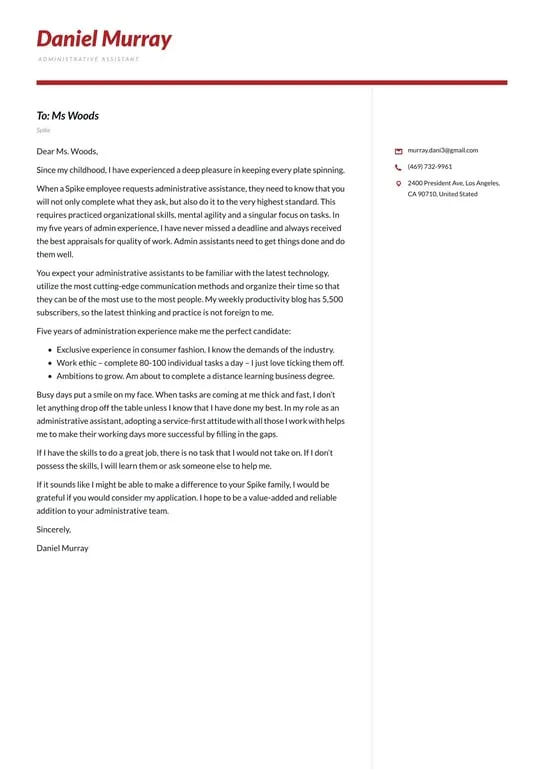
The salutation should be formal and appropriate. Use “Dear Mr./Ms./Mx. [Last Name]” if you know the hiring manager’s name. If the name is unknown, use a professional greeting such as “Dear Hiring Manager.” Avoid overly casual greetings. The salutation sets the tone for the rest of the letter and provides a polite start to your cover letter, showing respect for the recipient.
Body Paragraph 1 Focus on Position and Skills
The first paragraph should clearly state the position you are applying for and where you found the job posting. Briefly introduce yourself and express your interest in the role. This paragraph should also give a high-level overview of your skills and how they match the job requirements. It is important to be concise, enthusiastic, and show your understanding of the position’s needs.
Highlight Relevant Skills
In the body of your cover letter, highlight the skills that align with the job description. Administrative assistant roles typically require strong organizational, communication, and time management skills. Mention your proficiency in relevant software such as Microsoft Office Suite, and any other skills listed in the job description. Tailor your examples to the specific requirements of the position. Provide specific examples of how you have utilized these skills effectively in the past. This is your opportunity to demonstrate that you possess the specific skills necessary to succeed.
Showcase Experience

Detail your relevant experience, including previous administrative roles or related positions. Briefly describe your responsibilities and accomplishments in each role. Use action verbs to describe your duties, showcasing your ability to take initiative and achieve results. Briefly mention the company, and dates of employment, giving the employer an insight into your work history and showing your work ethics. The experience section provides context for your skills. Provide specific examples of how you have handled various tasks and challenges.
Body Paragraph 2 Elaborate on Achievements
This paragraph should focus on your achievements and provide specific examples of your successes in previous roles. Go beyond simply listing your responsibilities; instead, quantify your accomplishments to demonstrate the impact you made. Use metrics, numbers, and data to illustrate the value you brought to your previous employers, proving your effectiveness and adding value to the company. The goal is to show your impact and how you can bring similar results to the current role.
Quantify Accomplishments
Whenever possible, quantify your achievements. Instead of saying “Managed a large volume of emails,” say “Managed an average of 150 emails daily, reducing response time by 15%.” Quantifiable achievements provide concrete evidence of your skills and demonstrate your ability to achieve results. Using numbers and percentages clearly demonstrates your impact in previous roles. Use hard facts instead of general statements to grab the reader’s attention and make a stronger case for your candidacy.
Use Action Verbs
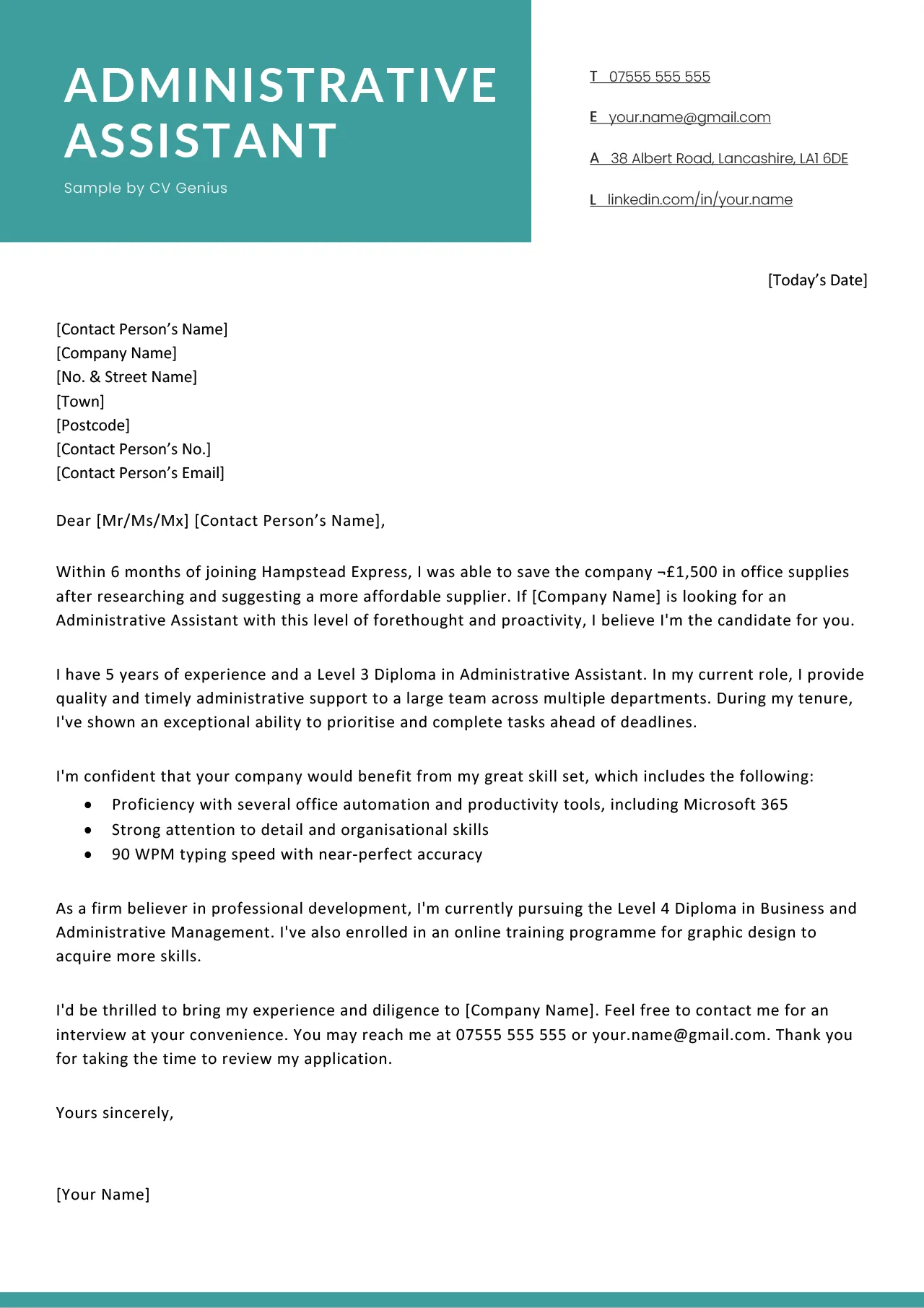
Use strong action verbs to describe your responsibilities and accomplishments. Verbs like “managed,” “coordinated,” “implemented,” “streamlined,” “improved,” and “achieved” make your descriptions more impactful and dynamic. Action verbs create a more engaging narrative and highlight your proactive approach. This will demonstrate your skills and accomplishments to the reader in a quick and effective way.
Body Paragraph 3 Express Enthusiasm and Fit
In the final body paragraph, express your enthusiasm for the company and the position. Explain why you are interested in working for this specific organization and how your skills and experience align with their values and goals. Expressing your interest in the company and the opportunity to contribute is important. Tailor your letter to show you understand the company’s mission, values, and specific needs. This shows your genuine interest and makes you a more attractive candidate.
Demonstrate Company Knowledge
Research the company and demonstrate that you understand their mission, values, and industry position. Mentioning specific projects, initiatives, or values that resonate with you shows that you have done your homework and are genuinely interested in the opportunity. Understanding the company helps you show your fit within the company culture. You can also mention how you align with their vision or goals. This will show the employer that you are interested in the position for more than just a job.
Convey Professionalism
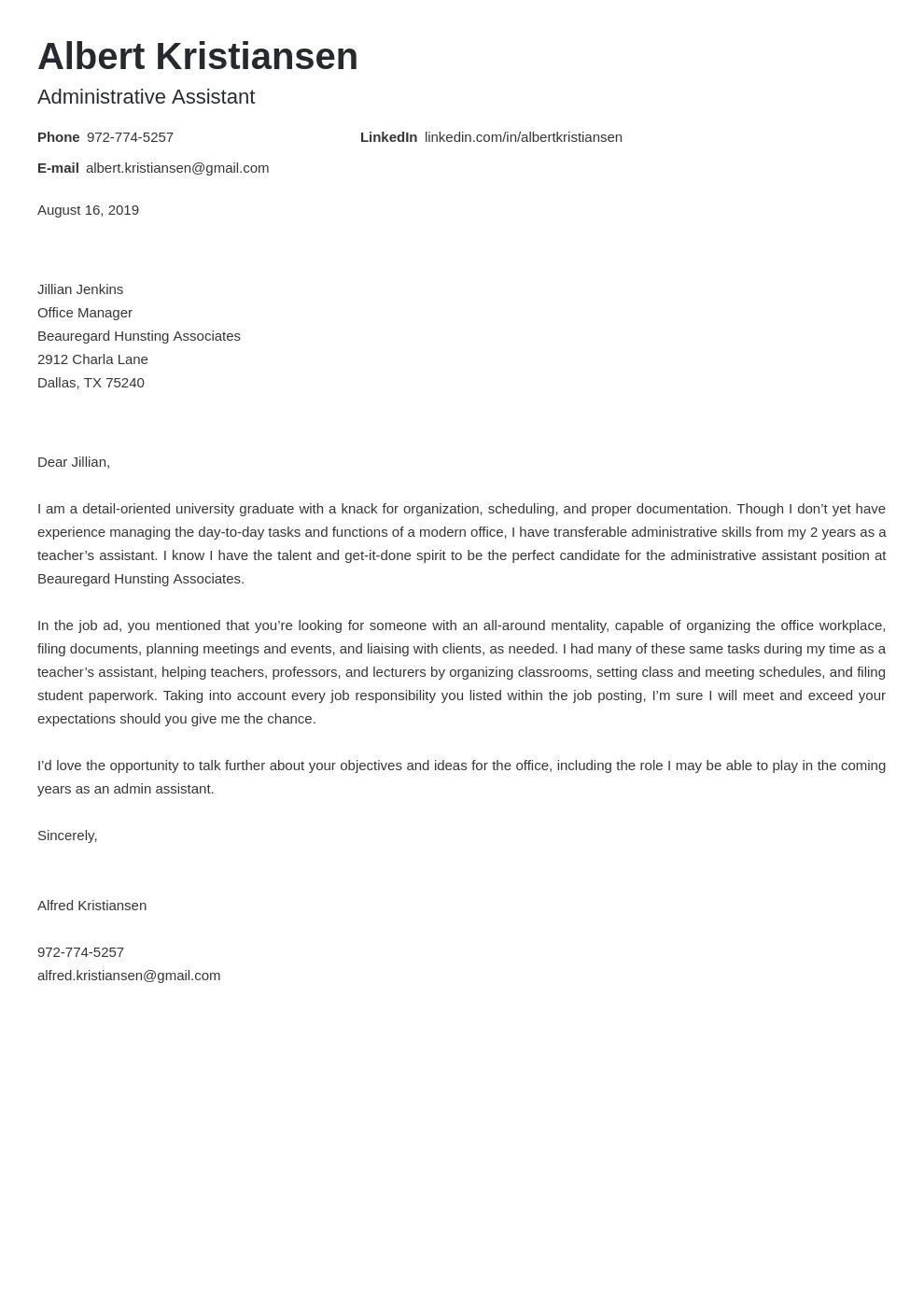
Maintain a professional tone throughout your cover letter. Use clear, concise language and avoid slang or jargon. Show respect for the recipient and the company. Ensure your cover letter is free of grammatical errors, typos, and formatting issues. Professionalism involves a formal tone, appropriate language, and a well-organized structure that represents you at your best. This will ensure that the employer recognizes your skills and value.
Closing the Cover Letter
Your cover letter should conclude with a formal closing and a call to action. This summarizes your interest in the position and indicates your next steps. This is your opportunity to make a final, positive impression and ensure the hiring manager knows what you want.
Formal Closing and Signature
Use a formal closing such as “Sincerely,” “Best regards,” or “Yours sincerely.” Leave space for your handwritten signature if you are submitting a hard copy, and then type your full name below the closing. Make sure the signature is clear and easy to read, adding a professional touch to your letter. Choose a closing that fits the tone of your letter and conveys your respect.
Call to Action
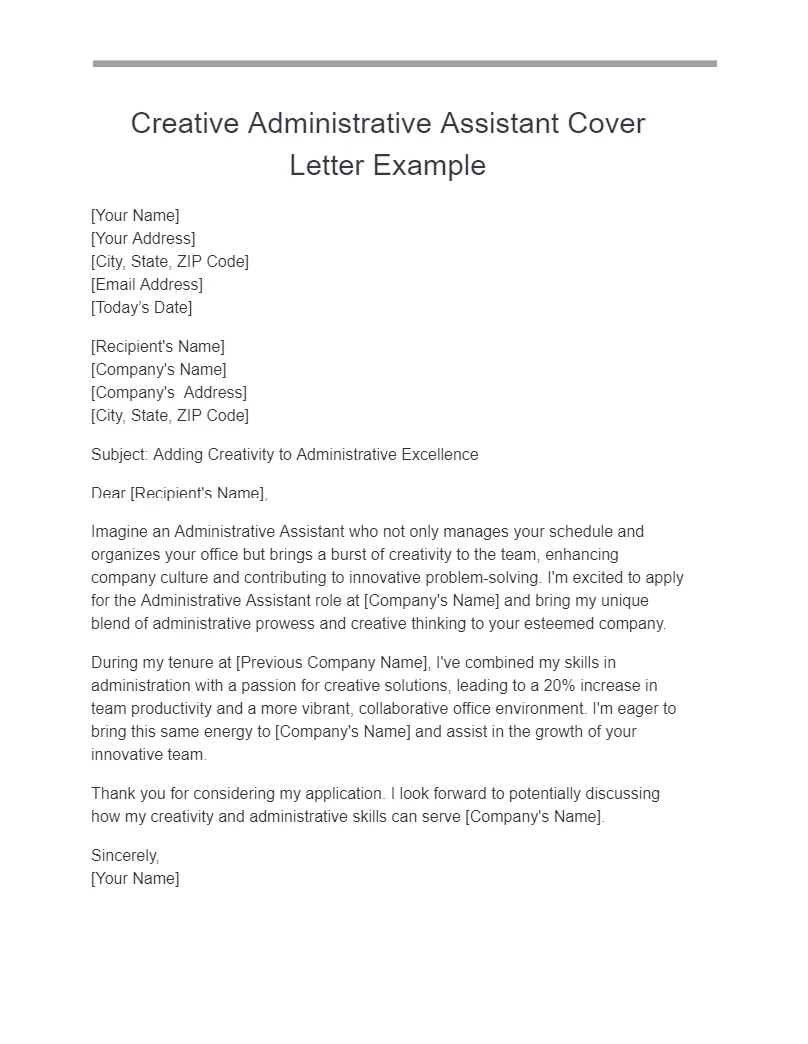
Include a call to action, such as expressing your interest in an interview or stating your availability. This indicates your eagerness to proceed to the next step in the application process. Thank the hiring manager for their time and consideration, showing your appreciation for their time and attention. Make your call to action simple and direct, such as, “I am eager to discuss my qualifications further in an interview and can be reached at [phone number] or [email address]. Thank you for your time and consideration.” The main goal is to move your application forward.
Proofreading and Formatting
Proofreading and formatting are critical to the success of your cover letter. A well-formatted letter free of errors demonstrates attention to detail and professionalism. Poor formatting and errors can undermine your credibility, so carefully review every aspect of your cover letter. Always check every aspect of your cover letter to make sure that it is free of any errors before submitting.
Formatting Guidelines
Use a professional, easy-to-read font like Times New Roman, Arial, or Calibri. Set the font size to 11 or 12 points. Use 1-inch margins on all sides of the page. Maintain consistent spacing throughout your letter, typically single-spacing within paragraphs and double-spacing between paragraphs. Use a simple, clean layout that is easy to read. Make sure your formatting is clear and professional, and that it is easy to follow.
Proofreading Checklist
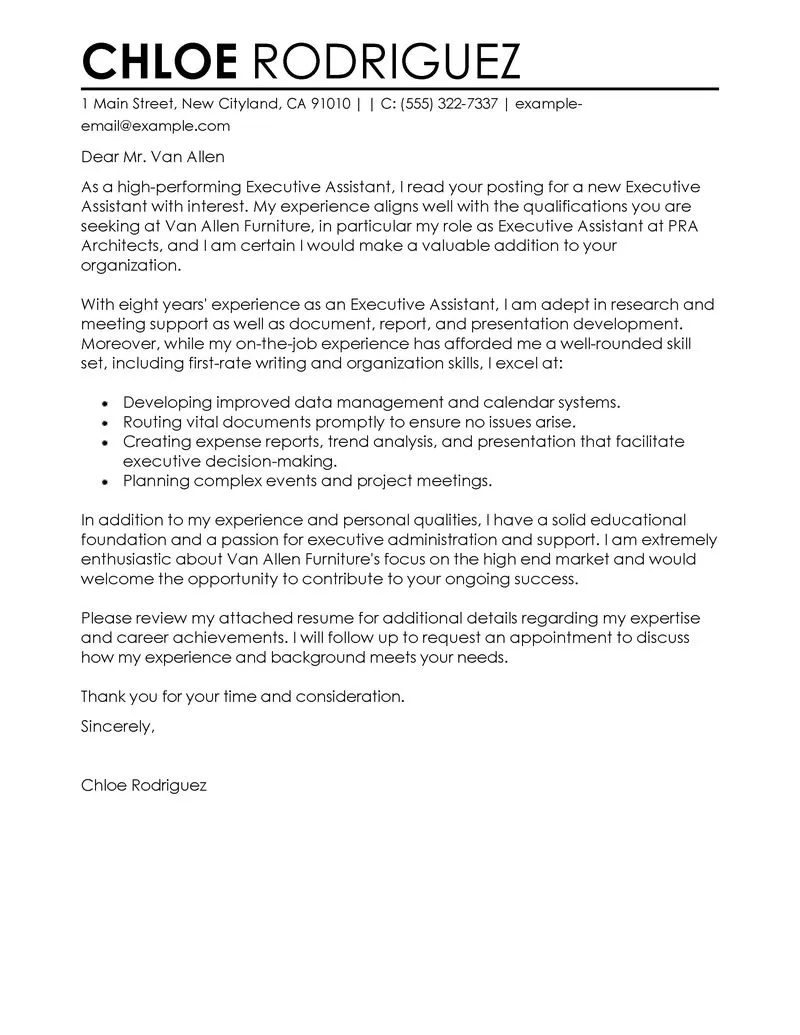
Proofread your cover letter multiple times, checking for grammar, spelling, and punctuation errors. Use a grammar checker, but also read the letter aloud to catch any awkward phrasing. Have a friend, family member, or career counselor review your letter for feedback. Ensure the letter is free of any typos and that your name, contact information, and the company information are accurate. Review everything to ensure your cover letter is polished and error-free.
Cover Letter Examples
Review example cover letters for administrative assistant positions to get ideas for formatting, content, and tone. There are numerous templates available online, but tailor them to reflect your unique skills and experience. Focus on highlighting the skills, such as organizational, communication, and software skills, that are relevant to the job description. Take your time to analyze what the examples do right and what you can learn from them. This will allow you to get a good idea of how to write your own cover letter.
